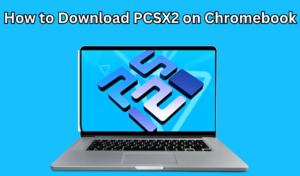
how to check if hardware acceleration is enabled windows 11
How to Check If Hardware Acceleration Is Enabled on Windows 11
Hardware acceleration in Windows 11 refers to the process of offloading specific tasks from the CPU to other specialized hardware components, like the GPU, for more efficient processing. This feature can significantly improve system performance, particularly for graphics-intensive tasks like video playback, gaming, and using demanding applications. Understanding whether hardware acceleration is enabled on your system and how to manage it can make a big difference in your overall computing experience. This article will guide you through checking if hardware acceleration is enabled, how to allow it, and answer some frequently asked questions.
How to Download PCSX2 on Chromebook: A Step-by-Step Guide
Latest Chromebook Releases: What’s New from HP and Dell in 2024
How to Check Hardware Acceleration in Windows 11
To check if hardware acceleration is enabled in Windows 11, follow these steps:
- Open Settings:
- Click on the Start menu and select Settings (you can also press Win + I).
- Go to System:
- In the Settings window, select System from the left-hand sidebar.
- Open Display Settings:
- Under System settings, click on Display.
- Advanced Graphics Settings:
- Scroll down and click on Graphics under the “Related settings” section.
- Check Hardware-Accelerated GPU Scheduling:
- Look for the Hardware-accelerated GPU scheduling option. If it’s turned on, hardware acceleration is enabled.
If the option isn’t visible, it may indicate that your system doesn’t support this feature or that your drivers need to be updated.
How Do I Make Sure Hardware Acceleration Is Enabled?
To ensure that hardware acceleration is enabled:
- Update Your GPU Drivers:
- Make sure your GPU drivers are up-to-date. Visit the manufacturer’s website (NVIDIA, AMD, or Intel) to download the latest drivers.
- Enable Hardware-Accelerated GPU Scheduling:
- If your hardware supports it, you’ll find the option under Settings > System > Display > Graphics > Change default graphics settings. Toggle the switch to enable Hardware-accelerated GPU scheduling.
- Enable Hardware Acceleration in Specific Applications:
- Some applications, like Google Chrome, have their hardware acceleration settings. Ensure these are enabled within the application itself (details below).
Should Hardware Acceleration Be On or Off in Windows 11?
Whether you should have hardware acceleration enabled or disabled depends on your use case:
- Enable Hardware Acceleration: If you regularly perform tasks involving heavy graphics, like gaming, video editing, or 3D modeling, hardware acceleration can improve performance and make your system smoother.
- Disable Hardware Acceleration: If you experience system instability, crashes, or screen tearing when performing specific tasks, try turning off hardware acceleration. Some older hardware or software might need to be fully compatible with this feature.
How to Enable Hardware Acceleration in Chrome on Windows 11
Enabling hardware acceleration in Chrome can help improve the browser’s performance, especially when handling multimedia content.
Steps to Enable Hardware Acceleration in Chrome:
- Open Chrome Settings:
- Open Chrome and click the three vertical dots in the upper right corner. Select Settings from the drop-down menu.
- Access Advanced Settings:
- Scroll down and click on Advanced to expand additional settings.
- Enable Hardware Acceleration:
- Under the System section, toggle the switch for Use hardware acceleration when available.
- Restart Chrome:
- After enabling the setting, you’ll need to restart Chrome to make the changes take effect. You can do this by closing Chrome and reopening it or by clicking on Relaunch when prompted.
How Do I Know If Hardware Acceleration Is Enabled in Chrome?
To confirm if hardware acceleration is enabled in Chrome:
- Go to Chrome Flags:
- Type chrome://gpu/ in the address bar and press Enter.
- Check the Status:
- You’ll see a detailed report of Chrome’s GPU settings. Look for sections like Graphics Feature Status and Video Decode. If these say Hardware accelerated, it means that hardware acceleration is active.
Does Hardware Acceleration Make Chrome Faster?
Yes, enabling hardware acceleration in Chrome can make the browser faster and more efficient, mainly when rendering complex web pages or streaming videos. By offloading tasks to the GPU, Chrome can handle these processes more effectively, leading to a smoother browsing experience.
Did Google Remove Hardware Acceleration?
No, Google has not removed hardware acceleration from Chrome. The feature is still available and can be turned on or off based on user preference. However, Google regularly updates Chrome, so it’s essential to ensure your browser is up-to-date to take full advantage of hardware acceleration.
Is Hardware Acceleration and Graphics Acceleration the Same?
While closely related, hardware acceleration and graphics acceleration are not the same. Hardware acceleration refers to any process where tasks are offloaded to specialized hardware components, which can include graphics acceleration. Graphics acceleration, on the other hand, explicitly offloads tasks related to rendering graphics to the GPU. In most contexts, when people refer to hardware acceleration as graphics, they are talking about graphics acceleration.
Hardware-Accelerated GPU Scheduling in Windows 11
What Is Hardware-Accelerated GPU Scheduling?
Hardware-accelerated GPU scheduling is a feature in Windows 11 (and Windows 10) that allows the GPU to manage its video memory, potentially reducing latency and improving performance in specific scenarios.
How to Enable Hardware-Accelerated GPU Scheduling in Windows 11
To enable this feature:
- Update GPU Drivers:
- Ensure your GPU drivers are up-to-date. This feature requires modern drivers from NVIDIA, AMD, or Intel.
- Access Graphics Settings:
- Open Settings > System > Display > Graphics.
- Enable GPU Scheduling:
- Toggle the switch under Hardware-accelerated GPU scheduling to turn it on.
Troubleshooting: Hardware-Accelerated GPU Scheduling Not Showing in Windows 11
If you don’t see the option for Hardware-accelerated GPU scheduling:
- Update Your Drivers: This is often due to outdated GPU drivers. Make sure they are updated.
- Check for Windows Updates: Ensure your system is fully updated.
- System Compatibility: Not all systems support this feature. It is more commonly available on newer hardware.
Should Hardware Acceleration Be On or Off in Windows 11?
Enabling hardware acceleration will improve performance for most users, particularly for graphics-intensive tasks. However, you might consider turning it off if you encounter issues like stuttering, crashes, or instability.
How to Enable Hardware-Accelerated GPU Scheduling in Windows 10
Enabling hardware-accelerated GPU scheduling in Windows 10 follows a similar process to Windows 11:
- Open Settings:
- Go to Settings > System > Display > Graphics settings.
- Toggle GPU Scheduling:
- Turn on Hardware-accelerated GPU scheduling.
Final Thoughts
Hardware acceleration can significantly improve your computing experience, mainly if you use your PC for gaming, video editing, or other graphics-heavy applications. Whether on Windows 10 or 11, knowing how to enable and check this feature ensures you get the best performance possible. However, monitoring how your system behaves after enabling it is essential. If you notice any adverse side effects, consider toggling the setting off.
Questions & Answers
Q: How do I check if hardware acceleration is enabled on Windows 11? A: Go to Settings > System > Display > Graphics, and look for the Hardware-accelerated GPU scheduling option.
Q: Should I enable hardware acceleration in Chrome? A: If you want smoother performance, particularly for multimedia-heavy tasks.
Q: What if I don’t see the option for Hardware-accelerated GPU scheduling? A: Update your GPU drivers and Windows OS. If it still doesn’t appear, your hardware may not support it.
Q: Is hardware acceleration the same as graphics acceleration? A: No, hardware acceleration refers to offloading tasks to specialized hardware, while graphics acceleration specifically deals with rendering graphics.




